Bezoek Toulouse in 2 dags
19 must-see POIs, geoptimaliseerde routes en anekdotes.
Kaart laden...
Je gaat de mooiste bezienswaardigheden van Toulouse bezoeken

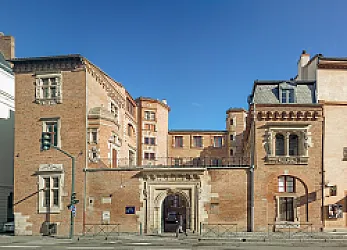
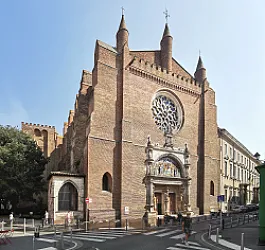




_Le_Square_de_Gaulle.jpg/320px-Rue_d'Alsace-Lorraine_(Toulouse)_Le_Square_de_Gaulle.jpg)
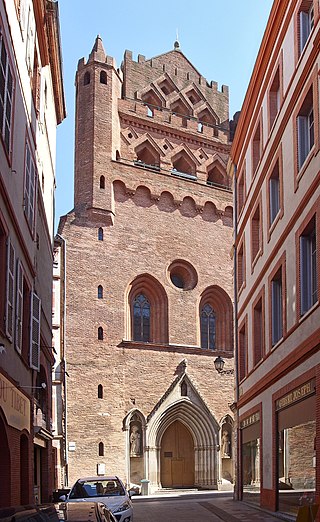










2 Days in Toulouse — A Heartbeat Through the Pink City
Toulouse grabbed my heart the moment I stepped onto Place du Capitole. The air felt warm and alive. Known as "The Pink City," Toulouse glows in terracotta and laughter. Some say it's overrated, but the city rewards slow curiosity. I still remember the first evening I watched light spill across Saint-Etienne Cathedral. That memory pulls me back every time.
Why visit? Because Toulouse is more than monuments. It's a city of soft stone, lively cafés, and vibrant street musicians. Wander from Place du Capitole to the Museum of the Augustinians and you feel history breathe. Taste fragrant cassoulet, hear bicycle bells, and see the brick facades warm under sunlight. This short guide shows you the best of a 2 days in Toulouse visit, with a curated Toulouse itinerary that hits the essentials: Place du Capitole, Museum of the Augustinians and Saint-Etienne Cathedral. Expect charm, unexpected corners, and a slow, satisfying rhythm.
Planning can feel overwhelming. There is so much to see that you could stay for weeks. If this is your first time in Toulouse, choices suddenly feel urgent. I get that. You want authentic moments without rushing. That’s why this plan focuses on what matters most. Below I’ll show you exactly how to spend two days to maximize discovery. You’ll know what to see in Toulouse and where to feel its real pulse.
Key tip: arrive early at major sites to avoid crowds and afternoon heat. Early mornings mean quiet squares, clearer photos, and a calmer pace. This matters because Toulouse is best experienced with time to linger. Skip the rush, sip coffee slowly, and let the city reveal itself. Now let’s dive into the itinerary!

Quick Mini Guide to Toulouse
Where to stay:
- Capitole/Carmes — central, 5–10 min walk to Place du Capitole and cafés; best for first-time visitors.
- Saint-Cyprien — river views, art scene and quieter evenings; good if you prefer local life across the Garonne.
- Near Jean Jaurès — budget options and fast tram/metro to museums and train station.
When to visit:
- Late spring or early autumn — warm terraces, pink bricks glow at sunset, fewer tourists than July.
- Avoid major industry events (Airbus shows) if you want lower hotel prices; check local festival dates.
Things to do:
- Start at Place du Capitole, then walk to Saint-Etienne Cathedral—notice the mix of Gothic styles and capitals.
- Visit Museum of the Augustinians for medieval art; finish at Niel Palace to see 19th‑century opulence.
- Stop at Cordeliers Church and stroll the Carmes market for local products and violet sweets.
- Book an interactive tour: The Alchemist TOULOUSE (quirky city riddles) or Secrets of Toulouse (historic walking tour).
Don't forget:
- Try cassoulet and Toulouse sausage; bring coins for small cafés.
- Wear comfortable shoes for cobbled streets; take photos at Pont Neuf at sunset.
- Check museum opening hours and carry a reusable bottle — water fountains are common.
Dag 1 - Toulouse
9 POIs te ontdekkenDag 1 - Ochtend à Toulouse
5 Bezienswaardigheden - Duur : 3h45 - Afstand : 1 km - Wandelen : 0h13
Hotel Dahus
- Het Hôtel Dahus werd in de 15e eeuw gebouwd voor rechter Pierre Dahus.
- Het Hôtel Dahus heeft elementen van de laat-15e-eeuwse gotische burgerlijke architectuur van Toulouse.
- Het werd vervolgens in de 16e eeuw aangepast in renaissancestijl, met de toevoeging van grote glas-in-loodramen en de reconstructie van de traptoren.
- De toren kreeg de naam Tournoer omdat Guillaume de Tournoer, raadslid en voorzitter in het parlement van Toulouse, een traptoren liet bouwen.
- Het staat sinds 1925 op de aanvullende inventaris van historische monumenten.
- Het werd ook ten onrechte Hôtel Roquette genoemd, omdat het toebehoorde aan de zoon van de capitoul Pierre de Roquette.

Place de la Trinité
- Het plein werd in de 19e eeuw ontwikkeld op de plaats van een belangrijk kruispunt van de Romeinse stad Toulouse.
- In de middeleeuwen was het plein levendig en profiteerde het van de activiteit van de Grand-rue, een commerciële doorgangsweg.
- Het plein is versierd met een fontein, de fontaine de la Trinité, die dateert uit de 19e eeuw.
- Het plein is sinds 1986 beschermd als notabel erfgoed.
- Het plein heeft een aantal prachtige gevels, zoals die van het maison Lamothe.
- Het wordt beschouwd als een van de gezelligste pleinen van de stad Toulouse.
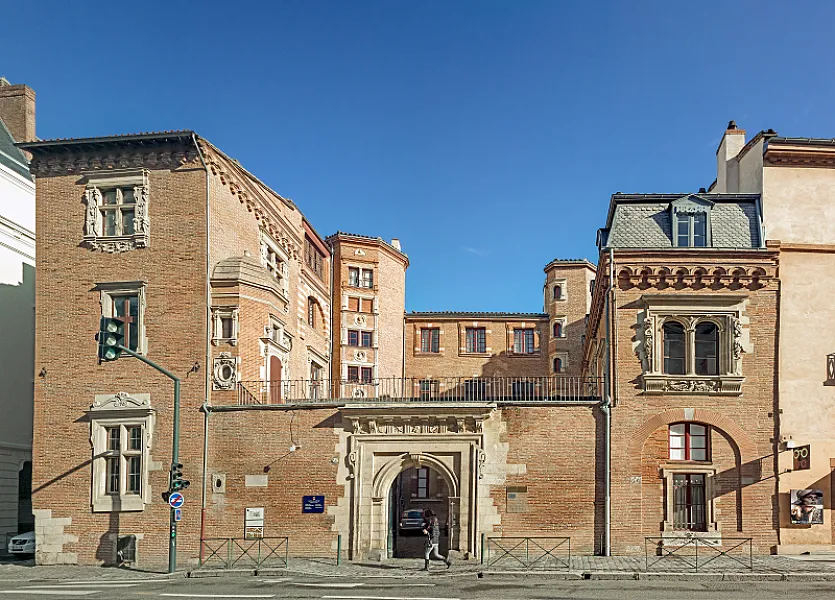
Vieux-Raisin Hotel
- Het Hôtel du Vieux-Raisin is een herenhuis in renaissancestijl.
- Het werd in 1518 gebouwd voor Béringuier Maynier, hoogleraar in de rechten en hoofdstad van de stad.
- De architectuur van het hotel is sterk beïnvloed door de Italiaanse renaissance.
- De ramen van het hotel zijn prachtig versierd met pilasters, kroonluchters en gebladerte.
- De ereplaats van het hotel is ontworpen met een portiek geïnspireerd op het Hôtel d'Assézat.
- De monumentale open haard van het hotel is voorzien van renaissanceversieringen met medaillons, cherubijnen en guirlandes van overvloed.
- Het Hôtel du Vieux-Raisin staat sinds 1889 op de monumentenlijst.
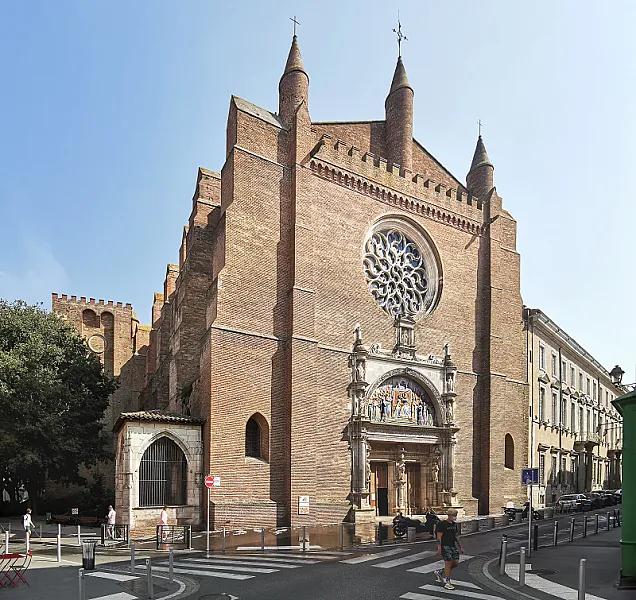
Kerk van Notre-Dame de la Dalbade
- De kerk Notre-Dame de la Dalbade werd gebouwd in de 15e eeuw en heeft een zuidelijke gotische stijl.
- De kerk heeft een gevel met een timpaan van keramiek in Italiaanse renaissancestijl.
- Het interieur van de kerk herbergt verschillende kunstwerken, waaronder beelden en schilderijen.
- Het tribuneorgel van de kerk, gebouwd in de 19e eeuw, staat op de monumentenlijst.

Hotel de Bagis
- Het Hôtel de Bagis, ook bekend als Hôtel de Clary of Daguin, is een prachtig privé-herenhuis.
- Het werd gebouwd in de 16e eeuw en valt op door de stenen gevel, die in die tijd uniek was in de stad.
- In 1855 werd het hotel voltooid met beeldhouwwerken van Calvet-Besson.
- Het Hôtel de Bagis staat sinds 1889 op de monumentenlijst.
Dag 1 - Middag à Toulouse
4 Bezienswaardigheden - Duur : 4h30 - Afstand : 0.9 km - Wandelen : 0h11
Hôtel d'Assézat
- Het hotel werd tussen 1555 en 1562 gebouwd door de architecten Nicolas Bachelier en zijn zoon Dominique Bachelier.
- Het hotel wordt beschouwd als een opvallend voorbeeld van Franse renaissance-architectuur.
- Het onderscheidt zich door zijn klassieke gevels.
- Het herbergt het Fondation Bemberg museum, waar kunstcollecties van de 15e tot het begin van de 20e eeuw worden tentoongesteld.
- Het Hôtel d'Assézat staat sinds 1914 op de historische monumentenlijst.

Jacobijnenklooster
- Het Jacobijnenklooster werd gebouwd door de Orde van Predikheren in de dertiende en veertiende eeuw.
- De gebouwen zijn helemaal van baksteen en vertegenwoordigen de Languedoc gotische kunst.
- De kerk huisvest sinds 1369 de relikwieën van Sint Thomas van Aquino.
- De voormalige Universiteit van Toulouse was vanaf de oprichting in 1229 in deze gebouwen gevestigd.
- Het klooster werd gebruikt als kazerne en opslagplaats na het verbod op de Dominicaanse orde tijdens de Franse Revolutie.
- De gebouwen werden gerestaureerd vanaf 1920 en zijn nu opengesteld voor het publiek.

Musée du Vieux Toulouse
- Het Museum van het oude Toulouse is sinds 1948 gevestigd in het Hôtel Dumay, gelegen in het historische centrum van Toulouse.
- Het museum toont voorwerpen met betrekking tot de geschiedenis van de stad Toulouse van de oudheid tot de 20e eeuw.
- Portretten, schilderijen en tekeningen van Toulouse kunstenaars zijn hier te vinden.
- Het museum heeft ook een fotocollectie en waardevolle historische documenten.
- Het Musée du Vieux-Toulouse werd in 1955 voor het publiek geopend dankzij de schenking van het Hôtel Dumay door Dr.

Hotel de Jean-Georges de Nupces
- Hôtel de Nupces werd in 1716 gebouwd voor Jean-Georges de Nupces, raadslid en later voorzitter van het parlement van Toulouse. De familie de Nupces bezat het hotel tot 1759, toen het via een huwelijk overging naar de familie de Senaux.
- Het hotel werd een woonhuis en herbergt nu appartementen en kantoren.
- Hôtel de Nupces is het eerste voorbeeld in Toulouse van een hotel tussen een binnenplaats en een tuin.
- Het hotel werd tijdens de Franse Revolutie geconfisqueerd als staatseigendom en later gerestaureerd door een projectontwikkelaar.
- Het Hôtel de Nupces staat sinds 20 juni 1950 op de monumentenlijst.
Dag 2 - Toulouse
10 POIs te ontdekkenDag 2 - Ochtend à Toulouse
5 Bezienswaardigheden - Duur : 4h00 - Afstand : 1.2 km - Wandelen : 0h16
Allées du Président-Franklin-Roosevelt
- De straten werden in 1922 vernoemd naar Theodore Roosevelt, president van de Verenigde Staten, en na de Tweede Wereldoorlog vervangen door Franklin Delano Roosevelt, eveneens president.
- Ze maken deel uit van het historische centrum van de stad en liggen in het quartier Saint-Georges De immeubels neoclassicistische, vooral op de nummers 1-7 en 11, staan op de monumentenlijst.
- De centrale ruimte van de allées heet sinds 2007 esplanade François-Mitterrand, als eerbetoon aan de voormalige Franse president.

Kerk van Notre-Dame du Taur
- De kerk is een katholiek religieus gebouw.
- De bouw begon in de veertiende eeuw en werd voltooid in de zestiende eeuw.
- Het is een voorbeeld van zuidelijke gotische kunst.
- De kerk Notre-Dame du Taur werd in 1840 opgenomen op de lijst van historische monumenten.
- Volgens de overlevering is de kerk gebouwd op de plaats waar het lichaam van bisschop Saturninus zou zijn gevallen van de torus die hem achter zich aansleepte.
_Le_Square_de_Gaulle.jpg)
Plein Charles-de-Gaulle
- Het plein is aangelegd tussen 1884 en 1887.
- Het plein kreeg in 1944 een nieuwe naam ter ere van Charles de Gaulle.
- Op het plein staat de Tour des Archives, een opmerkelijk historisch monument.
- Andere openbare werken op het plein zijn een monument voor Jean Jaurès, een plaquette van generaal de Gaulle, een sculptuur getiteld "Maternité" en een beeld van Claude Nougaro.

Maison de 1924
- Het gebouw is in 1924 ontworpen door Jules Calbairac.
- Jules Calbairac was een architect uit Toulouse.
- Hij studeerde aan de École supérieure des beaux-arts in Toulouse.Het gebouw staat op 7 Rue du Salé.
- In deze straat bevinden zich ook andere gebouwen die van belang zijn voor het erfgoed, met name de nummers 1 bis, 2, 5 en 7.

Toren Maurand
- Het Collège de Périgord, gesticht rond 1360 in Toulouse, is een voormalige hogeschool.
- De gebouwen van het college zijn gebouwd op de plaats van particuliere herenhuizen, waaronder het herenhuis Maurand.
- De toren van Maurand, die deel uitmaakt van het hotel, is een zeldzaam voorbeeld van romaanse burgerlijke architectuur uit de 12e eeuw.
- Na de Franse Revolutie werd het college gesloten en vervolgens omgevormd tot het Grand Séminaire van het bisdom en een universiteitsbibliotheek.
- Sinds 1905 behoren de gebouwen toe aan de Universiteit van Toulouse, waar de Faculteit der Kunsten is gehuisvest.
- De overblijfselen van het college staan samen met de Maurand-toren sinds 1931 op de monumentenlijst.
Dag 2 - Middag à Toulouse
5 Bezienswaardigheden - Duur : 3h30 - Afstand : 1.9 km - Wandelen : 0h25
Capitool van Toulouse
- Het Capitole is een emblematisch monument van Toulouse, waarin het stadhuis en het Capitole Theater zijn gevestigd.
- Tot de bouw werd in 1190 besloten door de Capitouls, magistraten van de stad, om de zetel van de gemeentelijke macht te vestigen.
- Dit is al meer dan acht eeuwen de plek van de gemeentelijke macht.
- De bouw van het huidige paleis begon in de zeventiende eeuw en ging bijna tweehonderd jaar door.
- De enige oude gebouwen die vandaag de dag nog overeind staan zijn de archieftoren, de galerijen van de Cour Henri-IV en de gevel van het stadhuis.
- Het Capitole is geklasseerd als historisch monument.

Basiliek van St. Sernin
- De Sint-Serninbasiliek is een van de grootste bewaard gebleven romaanse kerken in Europa.
- Ze werd gebouwd aan het einde van de 11e eeuw om de relikwieën van Sint-Saturninus te huisvesten.
- Het is het meest bezochte monument in de stad en wordt erkend om haar uitzonderlijke erfgoedwaarde.
- De basiliek is een belangrijk bedevaartsoord op de Camino de Santiago.
- Het staat sinds 1840 op de lijst van historische monumenten en sinds 1998 op de werelderfgoedlijst van de UNESCO.
- De basiliek herbergt 128 relikwieën, waaronder die van 6 apostelen, waarmee het na het Vaticaan de tweede katholieke kerk ter wereld is met de meeste relikwieën.

De arcades van het Capitool
- Gebouwd tussen 1851 en 1854.
- Raymond Moretti is de kunstenaar die verantwoordelijk is voor de 29 schilderijen op het plafond van de arcades.⭐ De schilderijen verbeelden sleutelmomenten en sleutelfiguren uit de geschiedenis van Toulouse: Saint Sernin, de Venus van Lespugue, luchtvaart of Carlos Gardel, onder andere.
- Raymond Moretti is de kunstenaar die verantwoordelijk is voor de 29 schilderijen op het plafond van de arcades.

Donjon du Capitole
- Na 60 jaar werken aan de ruïnes van de grote brand in het Capitool besloten de leiders van de stad de donjon te bouwen in 1525 om de archieven en het buskruit te beschermen.
- De donjon bestaat uit een bovenkamer voor de archieven en een Petit-Consistoire-kamer op de eerste verdieping, waar sinds 1948 het Bureau voor Toerisme van Toulouse is gevestigd.
- Op het oorspronkelijke dak van de donjon stond een houten girouette en een beeld van Lady Tholose, dat in 2005 werd vervangen door een kopie.
- Viollet-le-Duc restaureerde de donjon tussen 1873 en 1887 en voegde een Vlaamse klokkentoren toe.

Port Viguerie
- Port Viguerie is een rivierhaven op de linkeroever van de Garonne, in Toulouse.
- In 2008 werd de haven gerestaureerd en werd er een loopbrug aangelegd die de haven verbindt met de Raymond VI-tuin.
- In 2017 werden er een pier en een belvedère ingericht.
- Deze operatie maakt het mogelijk om van deze plek een schakel te maken tussen de historische havens op de rechteroever van de Garonne en het architectonische erfgoed van de wijk Saint-Cyprien.
- De Garonne bij La Daurade, waar de haven van Viguerie zich bevindt, inspireerde lokale schilders tot het begin van de 20e eeuw, zoals Henri Rachou.
Where to Stay in Toulouse
For a two-day visit to Toulouse, location matters more than star ratings: you want to spend time soaking up the rose-brick charm, not commuting. Choosing a base within easy walking distance of the main sights means mornings at the market, afternoons in museums and evenings lingering over cassoulet without worrying about trains. If you plan to focus on the city centre, aim for a place that lets you step out and immediately feel the pulse of the city.
The city is compact and organized around the historic center radiating from the Place du Capitole, with medieval lanes, church squares and a riverside life along the Garonne. Important cultural stops such as the Musée des Augustins and the imposing Saint-Étienne Cathedral all sit within a comfortable walking radius of each other, so the natural strategy for a short stay is to base yourself in or just outside this heart. The train station (Toulouse-Matabiau) and the metro lines make reaching farther neighborhoods quick, but a central location saves you precious hours on a 48-hour itinerary.
If you like being in the thick of things, the area around the Place du Capitole and nearby streets keeps cafés, restaurants and shops at your doorstep. For a slightly calmer, atmospheric option with pretty streets and local bakeries, consider the Carmes quarter or the lanes toward the cathedral; both put the Musée des Augustins and the Saint-Étienne Cathedral within easy reach. If you prefer river views and a village-like feel while still being a short taxi or tram ride from the core, the left-bank neighbourhoods such as Saint-Cyprien are friendly alternatives.
Transport in Toulouse is straightforward: most central attractions are walkable, the metro (two lines) and frequent buses fill gaps, and the city bike scheme is great for short hops over the bridges. If you’re arriving or departing by train or plane, check how close your accommodation is to Matabiau station or the airport shuttle to avoid last-minute stress.
Finally, remember comfort beats glamour for two days: choose a quiet side street if you value sleep, or a central square if you want to be in the action at night. Many central apartments and guesthouses sit in historic buildings—ask about stairs and lifts when booking—and favour places with good local reviews mentioning location. With the city so compact, a well-chosen neighborhood lets you see the Place du Capitole, the museums and the churches at an easy, relaxed pace.
Getting Around Toulouse
Toulouse is a joy to explore because the historic center is compact and the Tisséo network is straightforward: two metro lines, several tram lines, an extensive bus grid and the handy VélôToulouse bike system. Even if you arrive with only a phone and a sense of adventure, you’ll find clear stops, frequent services and easy connections. Signs at stations and ticket machines offer multiple languages, and the metro is a fast way to cover longer distances while walking lets you soak in the pink-brick architecture around Place du Capitole, the Museum of the Augustinians and Saint-Etienne Cathedral. 🚇
Practical ticket tip: buy a single single ticket if you’re making one or two hops, or grab a carnet (multiple-ride pack) or day pass if you’ll be hopping on and off all day — these save you money compared with singles. You can purchase tickets at machines, kiosks, or in the Tisséo app and many stations now accept contactless bank cards. Remember to validate your ticket when you board or at station validators: inspectors do check, and it’s an easy rule to follow. 🎫
Use Google Maps (or the Tisséo app) as your best travel buddy: type your destination and it will mix walking, metro, tram and bus options with live departure times. Google also shows the shortest walking routes across the central streets — super handy between closely spaced sights. If you want to avoid surprises, check live updates before you leave and save a screenshot or offline map if your data is limited. 🗺️
To save money, combine walking with public transport. The core attractions are close enough that you’ll often beat a bus by walking, and short rides on the metro can connect neighborhoods quickly without costing much. If you expect several trips in a day, the carnet or a day pass will pay off. Also consider VélôToulouse for quick, scenic hops along the Garonne — cheaper and more fun than a taxi for short distances.
I still remember the first time we explored: we started at Place du Capitole, walked to the Museum of the Augustinians in about ten lively minutes, then popped into a café. From there we considered the metro but chose to stroll to Saint-Etienne Cathedral — a five-minute walk through narrow lanes that felt like stepping into a postcard. When we did take transit later that afternoon, Google Maps and a validated Tisséo ticket made the rest of the day effortless. You’ll find it just as easy and delightfully local. 💡
What to Pack for Toulouse
Toulouse is the kind of city you explore on foot — winding streets, pink brick façades and churches around every corner. I’ve done days where I walked 12–15 miles (19–24 km) between the Capitole, Basilique Saint-Sernin and the Jacobins, and these items saved me from sore feet, drained batteries and soggy plans. Below are what I always toss in my daypack and why each one mattered the last time I wandered the “Ville Rose.”
1. Comfortable walking shoes (Ecco Soft 7 or similar): I learned the hard way that cute shoes don’t cut it here. I once switched to mid-height Ecco Soft 7s for a weekend and went from aching feet after 6 miles to fresh at 12–15 miles. The city’s mix of cobbles and alleys demands a supportive sole and good grip — your knees will thank you by sunset.
2. Cross-body anti-theft bag: I keep everything in a zipped cross-body (worn in front) because crowds around Place du Capitole get busy. On a long 10+ hour day I had my passport and wallet safe while stopping for coffee or ducking into a church; it’s the difference between a relaxed afternoon and a panicked chase back to your hotel.
3. Weather-appropriate layers: Toulouse weather can flip in a day — sun by noon, cool breeze by evening. I travel with a light merino base, a thin fleece and a packable waterproof shell; once a surprise shower soaked my travel companion’s cotton tee but my packable jacket kept me comfortable during an evening stroll along the Garonne.
4. European power adapter (Type C/E) + wall charger: French sockets are 230V Type C/E — I forgot this once and had to buy an expensive adapter at the station. Bringing the right adapter kept my camera and phone charged for photographing interiors like Basilique Saint-Sernin and evening squares without hunting for outlets.
5. Power bank (10,000 mAh): I use a 10,000 mAh pack and it routinely gives me a full recharge plus a top-up for my camera — essential on days I’m using maps and taking pictures for 8–12 hours. It’s lighter than a second charger and saved me from losing navigation halfway through a self-guided architecture crawl.
6. Optional: compact umbrella & reusable water bottle: A small umbrella tucks into a bag and saved me from a sudden downpour once; a refillable bottle keeps you hydrated while you walk between squares and churches (many fountains and cafés will refill it). Both are small, but they make long days in Toulouse much more pleasant.
Enjoy Your Trip to Toulouse!
In just two days you’ll explore 20 carefully chosen spots across the Pink City, packed with history and charm. From the bustling Place du Capitole to the serene Museum of the Augustinians and the soaring Saint‑Etienne Cathedral, this itinerary gives you everything you need to feel the spirit of Toulouse and see its architectural and cultural highlights.
Remember: this is a GUIDE, not a strict schedule. Be gentle with your plans and leave room for the unexpected — the magic often appears in a wrong turn, a tucked‑away café, or a street musicians’ set by the Garonne. Don’t pressure yourself to see EVERYTHING; choose what moves you, pause when you want, and let spontaneous discoveries shape your days.
I’m genuinely excited for you — you’re going to have an amazing time wandering the Capitole, peeking into churches, tasting local flavors, and soaking up the city’s light on pink brick facades. I hope you collect small joys and create unforgettable memories you’ll carry home long after the trip.
Want a playful way to explore? Try Coddy’s interactive tours — The Alchemist TOULOUSE and Secrets of Toulouse — for gamified city hunts that turn discoveries into tiny adventures. Check them out if you’d like a fun, guided twist on sightseeing.
Have fun and enjoy every moment — and if you want tips or want to share your highlights, I’d love to hear about them. Safe travels!
Wil je meer avontuur?
Ontdek onze stedelijke escape games om je bezoek om te toveren tot een interactief avontuur!























